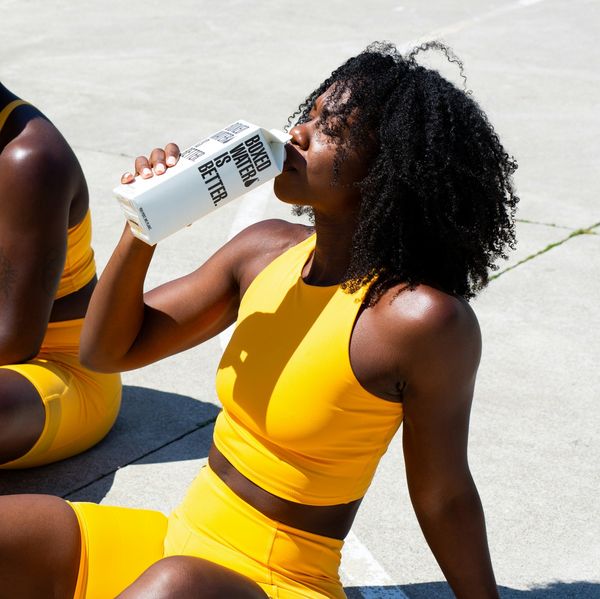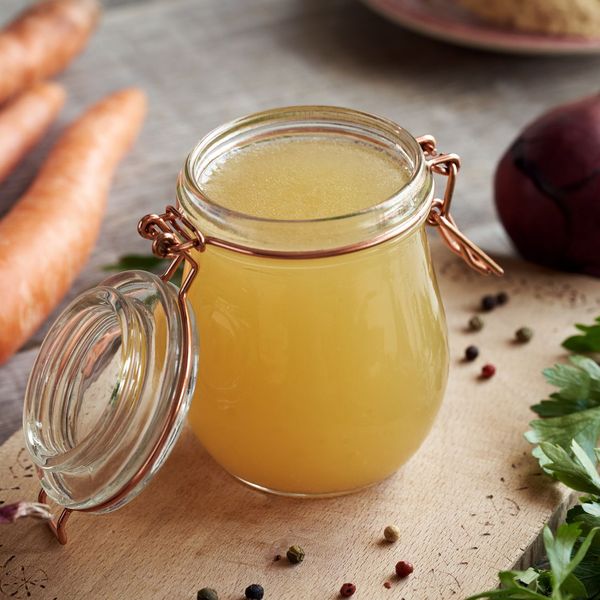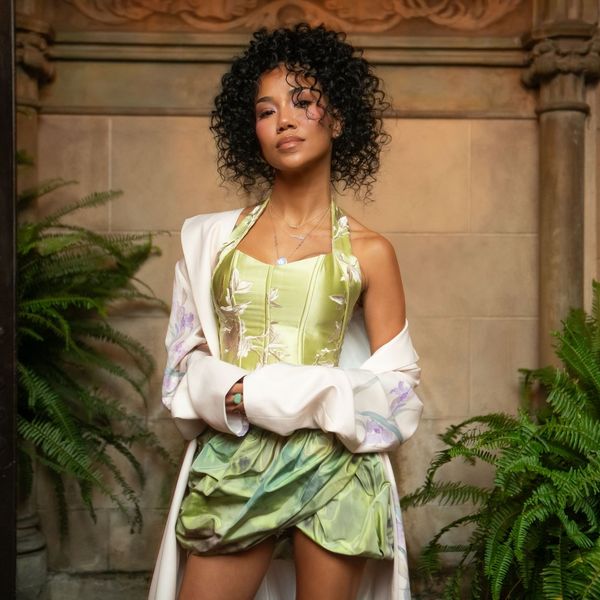
Something that I enjoy about writing for women's platforms is it puts you in the position of discovering all kinds of things that you might not ever discover otherwise; even about yourself. Take vaginal mapping, for example. A quick show of hands (via letting us know in the comment section) if you're familiar with what that is. Shoot, bonus points if you've ever done any vaginal mapping before.
If you've heard of it and your guess is that vaginal mapping is masturbation—actually, it's not. If you're wondering if it's a vaginal self-exam—you're getting warmer but not exactly. However, if you give me roughly 5-7 minutes of your time, I'll share with you what vaginal mapping is all about and why it's such a beneficial thing for all of us to do, at least a couple of times every year.
Here’s the Vaginal Mapping Breakdown
Here's the interesting thing about vaginal mapping, right out the gate. While masturbation is about stimulating your genitalia for the sole purpose of sexual stimulation and vaginal self-exams are about checking out the external part of your vagina (your vulva), along with the opening of it and your anus, in order to see if there are any abnormalities (basically it's a breast exam for down below), vaginal mapping is more like a therapeutic massage for your vaginal area. Really, your entire pelvic region.
In fact, there are many health and sex experts who say that, by partaking in this particular act, it can actually help to bring forth a certain level of healing and release if you've experienced some past sexual trauma or if you've got some sort of anxiety as it relates to that particular part of your body.
As far as the technique itself, as you're actually massaging your vagina via deep breathing and light stroking, it's important to feel for areas that might feel numb, tense, or even somewhat painful. In a way, think of it as reflexology for your vaginal area. Vaginal mapping is all about caressing both the outside and inside of your vagina—again, not so you can climax but so you can feel more at ease and at peace with yourself.
Some of the proven benefits of vaginal mapping include:
- It can help to loosen up tight pelvic floor muscles that can sometimes make sex uncomfortable.
- It can help to break up any congestion or mild adhesions that could be binding up the connective tissue around your pelvic floor muscles.
- It can also help to speed up the healing process of a mild pelvic or vaginal injury (like one that may occur during sex).
- It can help to free up emotional tension, stress or pent-up energy that is oftentimes "trapped" within your pelvis.
- It can make you feel more comfortable with your body overall.
If any of these benefits have further piqued your curiosity and you're wondering how you can become a vaginal mapping master, I've got some tips for you that can help you to achieve your goal:
How to Do Vaginal Mapping for Yourself
Again, because vaginal mapping is all about massaging your vaginal area (in fact, some people actually call it a "yoni massage"), that's the mindset you need to be in while doing this particular exercise. Get quiet. Light some soy-scented candles. Get into an area of your home where you feel fully comfortable with totally disrobing. Try and avoid any distractions (like loud music or your television). For this to be effective, you've got to truly hone in and focus solely on your pelvic area. That said, here are the steps.
1. Get to know your pelvis.
Before even getting into the massage part, let's do a quickie anatomy class, focusing solely on your pelvic region. Where you typically put your hands on your hips, that is known as your ilium. The two bones at the front of your pelvis make up your pubic bone. The bones that you literally sit on are your sitz bones (the technical word is ischium). The triangular-shaped bone at the base of your spine is known as your sacrum. And, the base of your sacrum, where your tailbone is, is called your coccyx. All of this is relevant because knowing the different parts of your pelvis will make doing the next things a lot easier.
2. Lie down on your back with your knees bent and your legs open. Then begin massaging your stomach and inner thighs.
Before getting to your actual vagina, it's a good relaxation technique to first use an oil like coconut, grapeseed or olive (all of them are high in antioxidants and are non-irritating to the inside of your vagina) to gently rub your stomach (which will also play a role in vaginal mapping) as well as your inner thighs and the crevices that connect your legs to your vulva (the outer part of your vagina). Once you feel more relaxed, it's time for the next step.
3. Start vaginal mapping by inserting a lubricated index finger into your vagina.
With the hand that you use more (meaning if you're left-handed, use that hand or if you're right-handed, use that hand), put some oil on its index finger and then gently insert that finger into your vaginal opening. Then place your other hand on top of your stomach, so that you can feel what you're doing, both inside as well as out. Next, press the inner part of your finger towards your pubic bone; if you pay close enough attention, you might just feel your urethra. Be intentional about looking for signs of tension or discomfort. If so, see if gently massaging those areas helps. Spend a good 5-7 minutes in this area. Then, while breathing slowly and deeply, move your finger towards the back part of your pelvis where your sacrum is and repeat the same process.
Once you're done with that area, massage the internal part of the left side of your pubic bone, then the right, all the while keeping your other hand on your stomach because the added external pressure will make it easier for you to detect if there is any "tightness" within. Also, pay close attention to whether or not you can feel your muscles relax as you're massaging the inside of your vagina; if you are doing everything properly, you should. This entire practice should take between 30-60 minutes. Just remember not to rush. This is all about self-exploration, being gentle with your pelvic area, and mastering how to deep breathe and massage simultaneously.
4. Consider investing in a pelvic wand as a massaging tool.
When you're first starting out with vaginal mapping, your finger is honestly enough; you want to make sure you know what is comfortable for you when it comes to where you go and how deeply. But once you get used to doing this type of massage, something that you might want to invest in is a pelvic wand. It's an easier way to reach the deeper parts of your pelvic floor muscles so that if you have any tender areas that may be resulting in mild pelvic pain, they can be massaged easier and the tension can be released quicker. If you'd like to look more into this particular purchase, click here.
5. Journal about the vaginal mapping healing experience, if you wish.
Something that I've written about before is the benefits that come with sex journaling (check out "The Art Of Sex Journaling (And Why You Should Do It)"). While a lot of it consists of writing down thoughts, memories, patterns, and even sexual desires, if you want to reserve a section for vaginal mapping, that certainly wouldn't hurt; especially the first couple of times that you do this kind of massaging. Write down how the exercise made you feel, the areas where you may notice are more tender, numb or firm than others and if any particular memories came to mind while you did it. Again, a big benefit that comes with vaginal mapping is it helps you to release any emotional stress or trauma that you might've been carrying in your pelvic area that you didn't even think about.
Then you're done. While the first time that you vaginal map, "awkward" might be the best way to describe how it felt to do it, again, if you make it a part of your self-care routine (even if it's only seasonally or bi-annually), you'll start to feel more comfortable with doing it because it will calm you, help you to know your vaginal area so much better and, if you journal through it, it can provide you with some epiphanies about your self-esteem, sexuality and emotional processing when it comes to both.
I know this isn't something that comes up often, but it is a hidden gem that is well worth considering. After all, the best maps lead to the most profound treasures, right? My sentiments exactly.
Join our xoTribe, an exclusive community dedicated to YOU and your stories and all things xoNecole. Be a part of a growing community of women from all over the world who come together to uplift, inspire, and inform each other on all things related to the glow up.
Featured image by Shutterstock
This Is How To Keep 'Holiday Season Stress' From Infecting Your Relationship
Hmph. Maybe it’s just me, but it seems like there is something really weird happening in the fall season air (because winter doesn’t officially begin until December 21) that cuddle season is in full swing while break-up season is as well. In fact, did you know that break-ups are so popular during the holiday season that December 11 is deemed Break-Up Day?
The reasons why relationships shift around this time vary; however, I did both roll my eyes and chuckle when I read that a very popular one is because it’s an easy way to get out of getting one’s significant other a Christmas present. SMDH.
Anyway, I personally think that the less shallow folks out here may contemplate calling things “quits” or they at least distance themselves a bit from their partner (and what I’m referring to is serious relationships) due to all of the stress and strain that oftentimes comes with the holidays whether it be financial, familial, due to their tight schedules or something else.
Listen, I would hate for you and your man to miss the fun and happiness of experiencing this time of year, all because you are so overwhelmed or irritated that you can’t really enjoy it. That’s why I have a few practical tips for how to avoid allowing the typical holiday season stress from INFECTING your relationship.
Manage Your Expectations
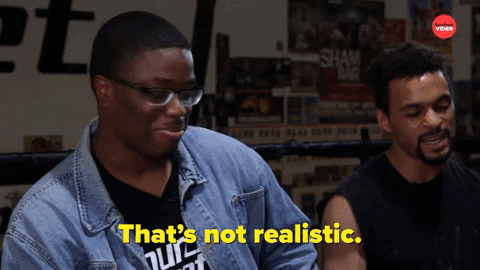 Giphy
GiphyUnmanaged expectations. If there is a main reason why the holiday season tends to be so stress-filled for so many people, I’d bet good money that this is the cause. And when you’re in a long-term relationship, expectations can manifest themselves in all sorts of cryptic and/or unexpected ways. You might have relatives who assume that you are going to be with them for Thanksgiving or Christmas when you have other plans in mind. You might be thinking that you are going to spend one amount for presents while your man is thinking something totally different. When it comes to scheduling, your signals may be crossed.
And you know what? To all of these scenarios, this is where clear and consistent communication come in. Don’t assume anything. Don’t dictate anything either. From now until New Year’s, mutually decide to check in once a week, just to make sure that you are both on the same page as it relates to the holidays and what you both are thinking will come along with it. The less blindsided you both feel, the less stressed out you will be. Trust me on this.
Set (and Keep) a Budget
 Giphy
GiphyOkay, so I read that last year, 36 percent of Americans incurred some type of holiday-related debt. Hmph. Last year, there was still some sense of normalcy in this country, chile, so I can only imagine what finances are gonna look like over the next several weeks. That said, since I don’t know a lot of people who don’t find being broke stressful, make sure that you and your bae set a budget and then stick to it this year — no ifs, ands or buts.
Because really, y’all — it doesn’t make sense to deplete savings and/or max out credit cards for a few days of giggles only to be damn near losing your mind because you don’t know how to make ends meet come Dr. Martin Luther King, Jr. Day.
And by the way, this tip doesn’t just speak to things like food and gifts; I also mean travel. If it doesn’t make a ton of sense (or cents) to be all over the place this year — DON’T BE.
Keep Matthew 5:37 at the Forefront
 Giphy
GiphyIf off the top of your head, you don’t know what Matthew 5:37 says, no worries, here ya go: “But let your ‘Yes’ be ‘Yes,’ and your ‘No,’ ‘No.’ For whatever is more than these is from the evil one.” That verse right there? Oh, it’s a boundaries lifesaver! I say that because do you see “maybe” or “I’ll think about it” in there? Nope. LOL. It says that you should tell people “yes” or “no” and leave it at that — and that complements Anne Lamott’s quote, “’No’ is a complete sentence” impeccably well. Yeah, you’ve got to remember that anything beyond a yes or no to a request is privileged information; you don’t owe anyone details or an explanation.
Besides, if you are really honest with yourself, when someone asks you something and you give a “Umm, let me think about it” kind of reply, more times than not, you already know what your answer is going to be — so why not let you both off of the hook? Give your response. Commit to that. And let everyone (including yourself) get on with their lives and schedules.
I promise you that when it comes to those holiday parties, you are pissing more folks off by not RSVP’ing or doing so and not showing up than just saying, “Thank you but not this year” off the rip.
Remember That Your Personal Space Is Privilege Not a Right
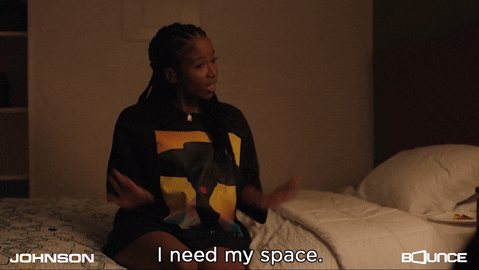 Giphy
GiphyA friend of mine recently bought a new house and invited me over to come see it. He’s a single man with no children, so as I was taking in all of the space that he had, especially as I walked through his finished basement, I joked about relatives coming to live with him. “Hell no” and “absolutely not” were pretty much his immediate responses as he went on to say that some folks even had the nerve to be offended when he told them that he had no intentions on taking DNA in.
Ain’t it wild how people think that your stuff is their right? And yes, that brings me to my next point. Your home is your sanctuary space. If you want to host folks this year — cool. If not, ALSO COOL. Please don’t let folks (family included) guilt you into how they want you to act or even into what they would do if the shoe was on the other foot. You are not them — and as one of my favorite quotes states, “If two people were exactly alike, one of them would be unnecessary.” (A man by the name Larry Dixon said that.)
Hell, my friends? They know that I am good for sending them random things that they need or even want all throughout the year. Coming over to hang out at my pace, though. Uh-uh. Chalk it up to being a card-carrying member of the ambivert club yet I like keeping my living space personal — and I sleep like a baby, each and every night, for feeling that way.
Always remember that your space, your time, your resources, your energy and shoot, yourself period (including your relationship), are all things that are your own. You get to choose how, when and why you want to share them. The holiday season is certainly no exception.
Cultivate Some “You Two Only” Traditions
 Giphy
GiphyIt’s not uncommon for some couples to hit me up after the holiday season to “detox.” Sometimes it’s due to the financial drama (and sometimes trauma) that they experienced. Sometimes it’s because they allowed their relatives (especially in-laws) to get more into their personal business than they should’ve. More than anything, though, it tends to be because they didn’t get enough quality time together and so ended up feeling “disconnected.”
Please don’t let that happen. Listen, I’m not even a holidays kind of woman and yet, I will absolutely sit myself down with some hot chocolate and chocolate chip cookies to enjoy a Hallmark holiday film or two. Aside from the fact that most of them are lighthearted and sweet, I also like that they usually focus on couples loving on each other amidst all of the holiday beauty and ambiance — which is something that all couples should set aside some time to do.
Maybe it’s a vacation. Maybe it’s a staycation. Or maybe it’s my personal favorite, A SEXCATION. Whether it’s for a few days, the weekend or even overnight — don’t you let the holidays go by without setting aside time for you and your man to celebrate one another. Don’t you dare (check out “Are You Ready To Have Some Very Merry 'Christmas Sex'?”).
GET. SOME. REST.
 Giphy
GiphyI once read that 8 out of 10 people get stressed out over the holidays and 3 out of 10 lose sleep during to it — and when you’re stress-filled and sleep-deprived, that can absolutely lead to hypersensitivity, making mountains out of molehills and even not being in the mood for sex.
Your relationship can’t afford to go through any of this, so definitely make sure to prioritize rest. I don’t care how unrealistic it might seem during this time, sleep should never be seen as a luxury; it will always and forever be a great necessity.
That said, try to get no less than six hours of shut-eye in (check out “6 Fascinating Ways Sex And Sleep Definitely Go Hand In Hand”) and even ask your bae to take a nap with you sometimes (check out “Wanna Have Some Next-Level Sex? Take A Nap, Sis.”). Not only will sleep help to restore your mind, body and spirit but, when it’s with your partner, it’s an act of intimacy that can make you both feel super connected, even in the midst of what might feel like chaos.
___
Holiday season stress is real. Still, never give it the permission or power to throw your relationship off. Put you and your man first and let the holidays be what they are gonna be, chile.
Let’s make things inbox official! Sign up for the xoNecole newsletter for love, wellness, career, and exclusive content delivered straight to your inbox.
Featured image by Shutterstock
Dreaming Of A White Christmas? These 7 Winter Wonderland Destinations Are Perfect For The Holidays
While most people opt for a tropical vacation during the winter months, there are still many people who want to fulfill their winter wonderland fantasies, which are more than likely centered on watching snow by the fireplace while sipping some hot cocoa.
With Thanksgiving vastly approaching and Christmas a little under a month away, there is still time to ditch the traditional Christmas home to visit family or friends.
Whether you’re looking to put a new stamp on your passport and keep things domestic with a destination in the States, xoNecole has you covered with a few hotspots for those itching to go somewhere cold (but with cozy vibes) this holiday season.
Aspen, Colorado
Our Christmas queen, Mariah Carey, has been taking an annual trip to this snowy destination since 1997, just three years after dropping the track that would make her the unofficial (but official to us) ambassador of the winter holiday.
Aside from being a key vacation spot for one of the culture’s greatest musicians, Aspen also offers travelers access to world-class skiing and snowboarding and four distinct mountains that provide the perfect backdrop for a winter vacation.
Whistler, British Columbia, Canada
Home to the largest ski resort in North America, Whistler Blackcomb, this destination is located in the Coast Mountain Range and is about 75 miles north of Vancouver.
From luxury spas like Scandinave Spa Whistler to Olympic Park, this is another top winter vacation spot that offers a unique experience for people who love snow and the thrill of a good adventure.
Western Massachusetts
Dubbed the place for a magical holiday escape, Springfield, Massachusetts, blends the warmth of small-town charm with unforgettable experiences like Grinchmas at Springfield Museums, Winterlights at Naumkeag in Stockbridge, Historic Deerfield’s Winter Frolic, and many others.
This destination offers something for all ages, and it’s close to home, making it all the more reason to place on your radar for a winter getaway.
Rovaniemi, Finland
If you want to really get into the Christmas spirit, this just may be the place for you. As the official home to Saint Nick himself, Rovaniemi, Finland offers reindeer sleigh rides, the opportunity to stay in a glass igloo, as well as an opportunity to experience the Santa Claus Village.
Lake Tahoe, California/Nevada
Who says that visits to the lake house are only reserved for summer vacation? A winter trip to Lake Tahoe is equipped with stunning lake views and top-notch ski resorts, including Heavenly and Northstar.
Chamonix, France
Sitting at the base of Mont Blanc, Chamonix, France, is known for its skiing and mountaineering. This destination is home to the Aiguille du Midi cable car, the charming Alpine village, and is also close to various other European ski destinations.
Northeastern Pennsylvania
This area of the U.S. state is home to the Poconos Mountains, whose renowned ski resorts include Camelback Mountain, Blue Mountain, and Jack Frost Big Boulder. Whether you’re a ski expert, a beginner, or just there for the vibes, this destination makes for a winter vacation that balances fun adventures and cozy getaways. Additionally, Pennsylvania is home to the Christmas Tree Capital of the world.
Feature image by Shutterstock
Originally published on November 23, 2024



